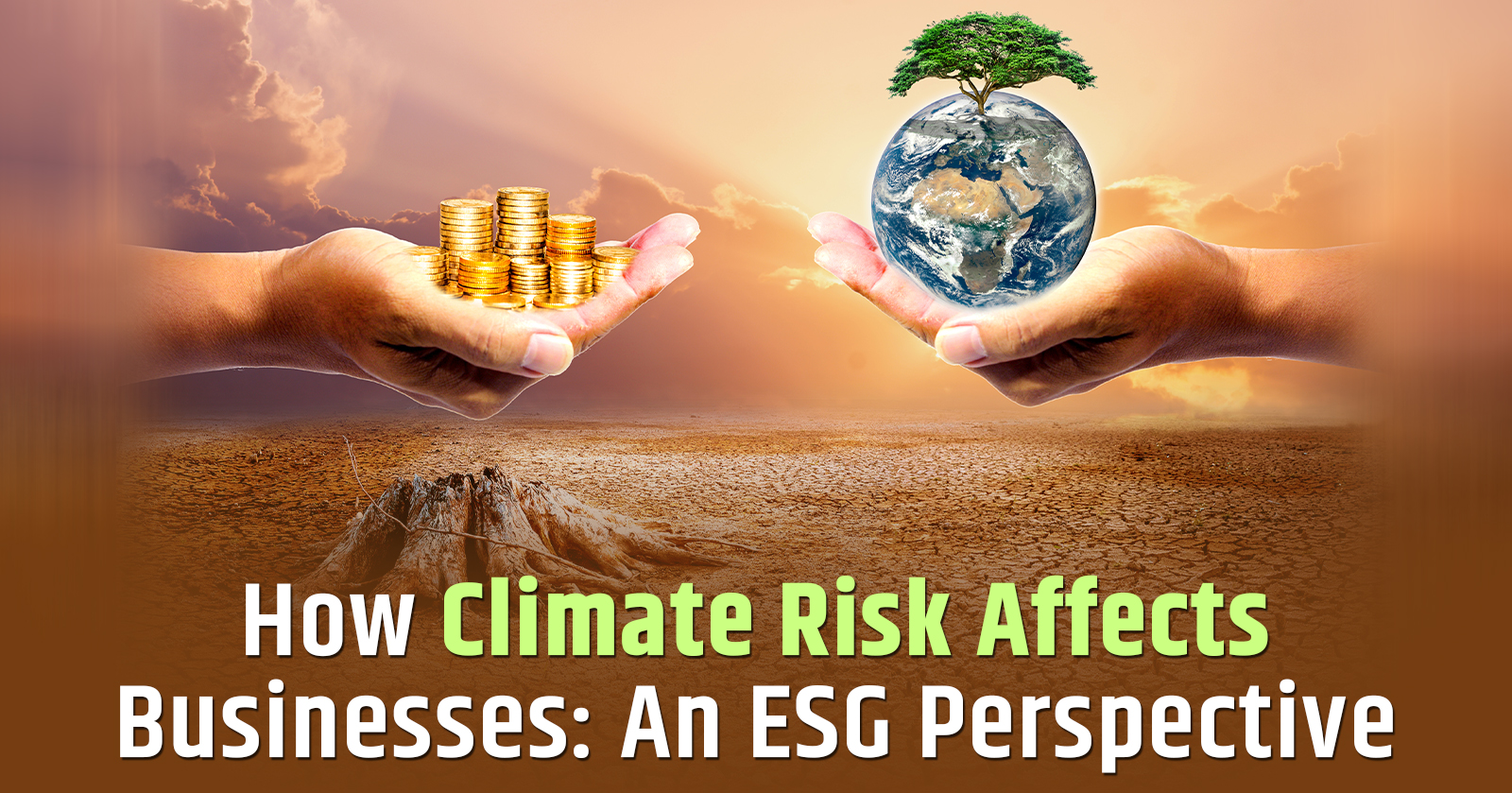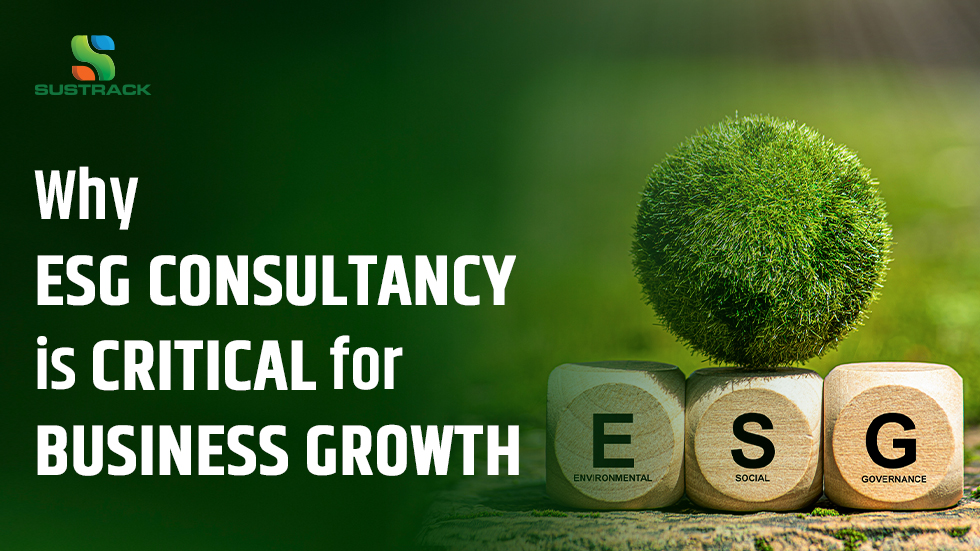How Climate Risk Affects Businesses: An ESG Perspective

Nowadays, climate risk has become a major concern for companies. It means the risks and losses companies face due to climate change and environmental changes. From extreme weather affecting supply chains to new green regulations, businesses must now include climate risk as a key part of their ESG risk management.
Knowing about climate risk for companies is key to building strong sustainability plans and staying resilient in the long run. With effective business climate adaptation and transparent ESG strategies, companies can not only reduce their exposure to physical, transitional, and reputational risks but also create new opportunities for sustainable growth.
In this blog, we will explain the types of climate risks, their impact on businesses, and how disclosure, transparency, and ESG practices help manage them.
What Is Climate Risk?
Climate risk means the possible negative effects of climate change and environmental factors on a company’s long-term growth. It includes problems like extreme weather events, resource scarcity, rising sea levels, and new regulatory changes. As climate change continues, businesses face more physical, transitional, and reputational risks that can affect their performance and sustainability.
Advantages of Climate Risk Assessments
There are more advantages of climate risk assessments, such as:
- Understanding ESG climate risk and climate risk for companies helps investors make smarter decisions.
- By considering climate risk, investors can spot companies that are ready to handle climate change challenges.
- Through ESG risk management, investors can support sustainable and resilient businesses, contributing to a greener future.
- New regulations also support companies in managing emissions and following sustainable investment practices.
- Companies can follow these insights to achieve their sustainability goals.
Steps in Climate Risk Assessment
There are four important steps for assessing sustainability risk and managing ESG risk management:
Identifying climate-related risks: Consider risks from extreme weather events and new policies or regulations.
Measuring business impact: See how climate risks could influence company performance, day-to-day operations, and logistics.
Conducting scenario analysis: Use different climate scenarios to understand potential disruptions and plan for the future.
Integrating findings into strategy: Incorporate insights into business climate adaptation plans and decision-making to reduce risks and build resilience.
Types of Climate Risks
-
Transition Risks
Companies face transition risks when adapting to climate change and transitioning to reduce carbon operations. For climate risk for companies, this involves changes in policies, rules, technology, and markets to reduce greenhouse gas emissions and embrace renewable energy.
Depending on how quickly and effectively a company responds, transition risks can create financial and reputational risks.
Companies with low emissions or those active in renewable energy can benefit from market, technological, and reputational opportunities. Handling these risks is essential for ESG risk management and managing ESG climate risk.
Policy and Legal: Policy actions around climate change are constantly evolving. Some aim to limit activities that worsen climate impacts, while others promote adaptation. For climate risk for companies, the financial impact depends on the nature and timing of these policy changes. With growing ESG climate risk, companies that fail to adapt, lower emissions, or disclose key financial risks face higher chances of legal challenges.
Technology: New technologies that support the shift to a low-carbon, energy-efficient economy can greatly affect businesses. While innovation creates opportunities, it can also disrupt old systems. In ESG risk management, understanding the timing and impact of technological change is crucial for reducing climate risk for companies.
Market: Changes in supply and demand caused by climate change bring market risks. Companies applying robust ESG risk management can find new growth areas, while others may encounter losses.
Reputation: Reputational risk depends on public perception of a company role in tackling climate change. Businesses that do not act on the low-carbon transition may face trust issues, while proactive sustainability efforts can build their brand and reduce ESG climate risk.
-
Physical Risks
Physical risks result from the direct effects of climate change. They may be acute, such as extreme weather events, or chronic, like long-term shifts in climate patterns. For climate risk for companies, these risks add to overall sustainability risk and are an important part of ESG climate risk management.
Acute: Acute physical risks are event-driven, like cyclones, hurricanes, floods, or extreme heat and cold waves.
Chronic: Chronic physical risks are long-term changes in climate patterns, such as rising temperatures, sea level rise, or shifting rainfall patterns.
Companies need to understand both acute and chronic risks to strengthen business climate adaptation. Proper handling reduces sustainability risk and is vital for managing ESG climate risk.
Why Choose Sustrack for Managing ESG Climate Risk?
Today, climate risk for companies is a major concern. From severe weather events to new regulations, companies encounter physical, transitional, and reputational risks that affect performance and growth
Sustrack helps companies manage these risks with smart ESG risk management and business climate adaptation strategies.
We helps businesses understand climate risks, apply practical ESG strategies, maintain transparency, and learn from real-world examples. Managing ESG climate risk becomes simple and drives long-term growth.



